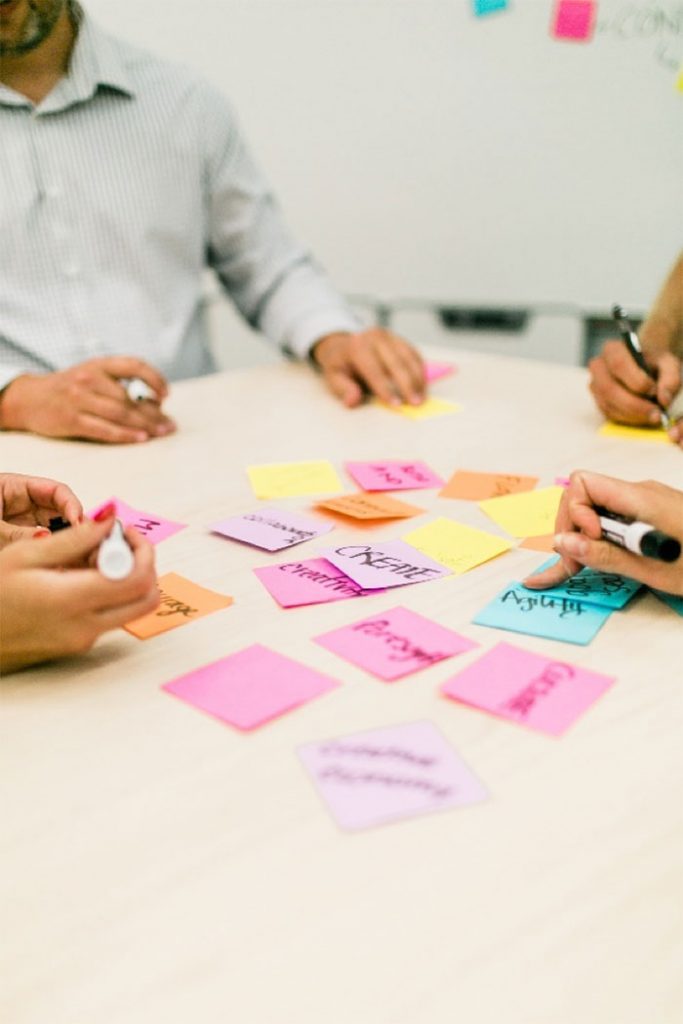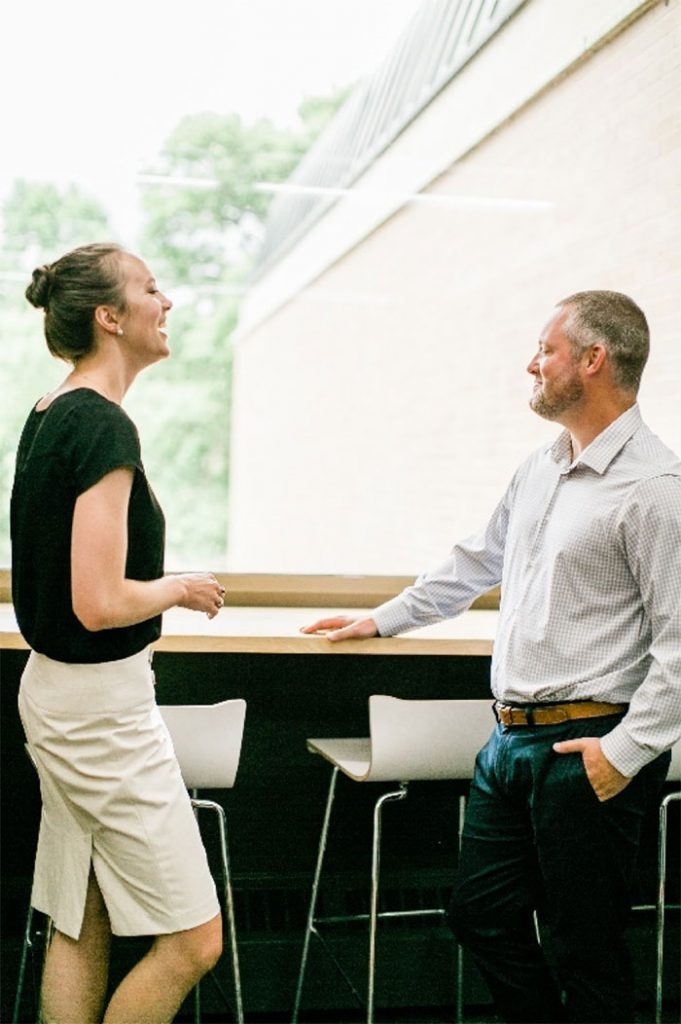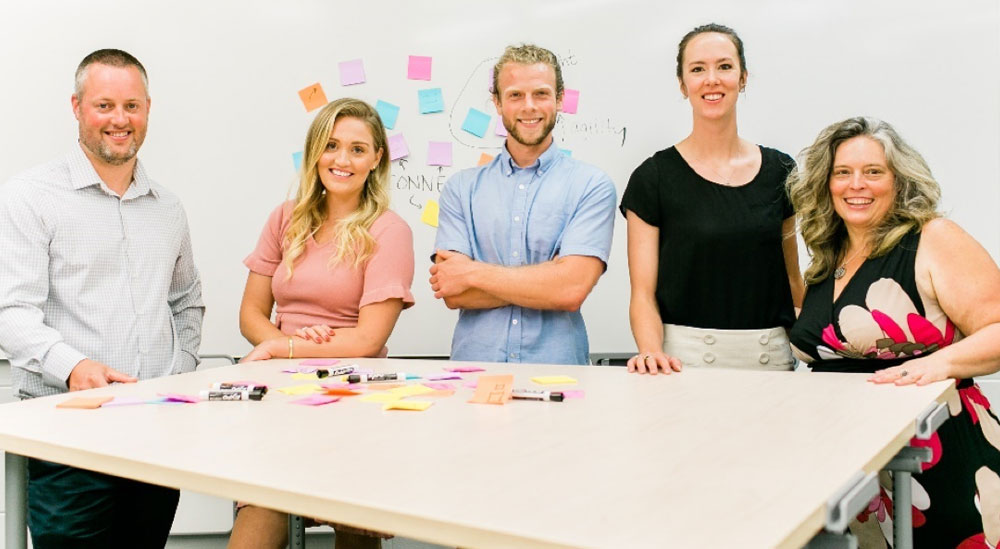
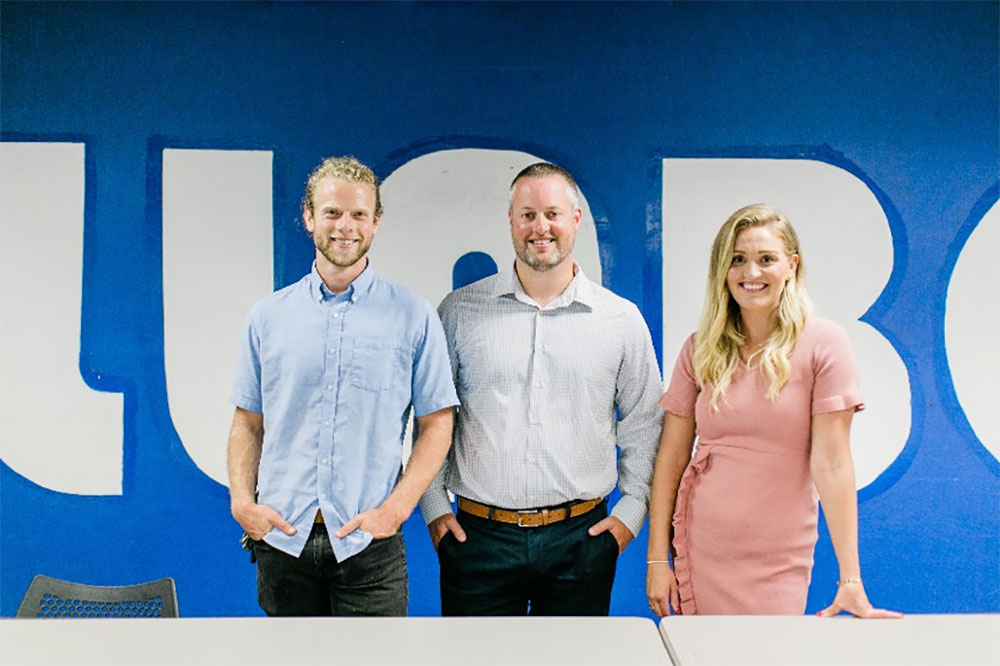
Fellowship Introduction
“Develop revenue-generating strategies to build, sustain and grow the viability and national impact of CREATE” was my statement of purpose upon entering my role as MBA Fellow with CREATE Portage County, an organization who’s impact on our community is rooted deeply, and with work that’s not always highly visible.
Throughout the course of this week, I’ll be sharing some highlights from one of the most impactful engagements of my professional career to-date – and hopefully some encouragement for you to find deeper meaning in your own work.
My intent in joining CREATE was, first, to do everything I could to support this high-impact organization that’s doing such innovative community development work and, more specifically, support the design of offerings that would generate growth while staying grounded in the mission of CREATE: to advance vibrant and welcoming communities. It was important to do so in a way that would support growth and impact locally in Portage County – where the roots of this organization lie.
Continuing the strategic discussion around brand recognition was also a priority, especially considering the novel approach in our community, and sometimes difficult-to-define nature of CREATE’s work. Our conversations included elevating CREATE’s strength as a thought-leader in innovative approaches to community and economic development. The organization achieves this specifically by leveraging the creativity of people – and connecting people and resources in promotion of collaboration.
The fellowship with CREATE gave me the opportunity to apply key learnings from the professors at UWSP and via collaboration with my talented MBA cohort. Many of CREATE’s organizational strengths are in direct alignment with the central concepts of the MBA curriculum – specifically rare leadership and agility, which I look forward to sharing more about this week.
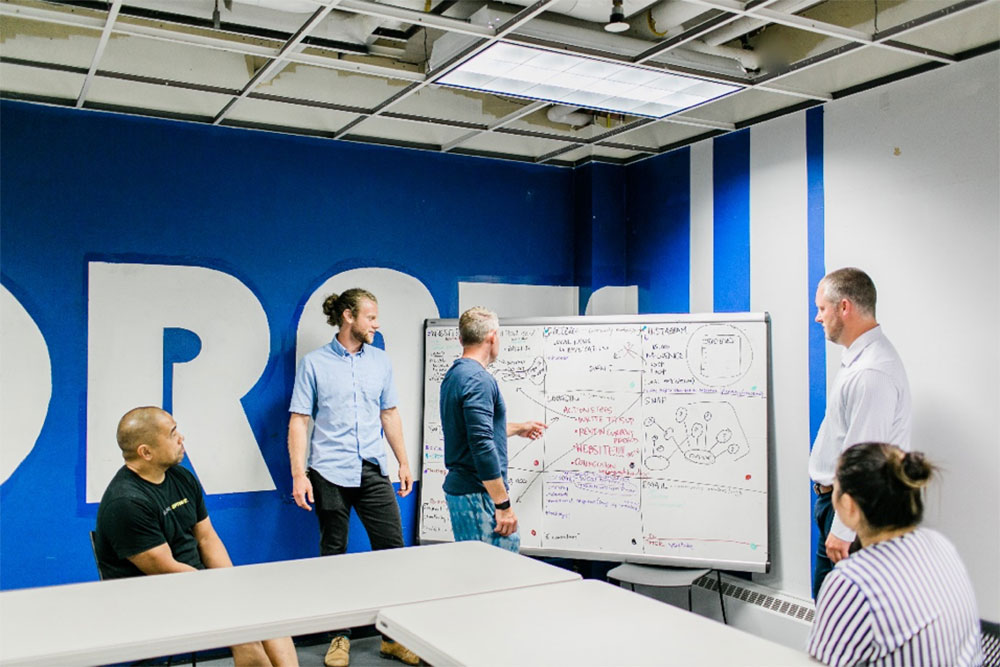
Agility
Up to this point in my career, I’ve leaned on more traditional, linear ways of working: think plan, prepare, execute, evaluate, repeat. I led with a mindset that emphasized planning and process as my crutch – a rational, but sometimes unimaginative approach to manage the workload of today’s corporate demands. My approach: prudent and sensible. Simply put, process works.
Until it doesn’t.
Humor me: let’s put agility in the paradoxical bucket of planning and process to explore this.
I’ve learned key pieces of agility include leveraging our network to foster intraorganizational connections, resisting the urge to formalize, and expanding collaboration during strategic decision making. This includes blurring the lines between planning and action.
What can feel like lack of structure – or even a bit chaotic – to someone who comes from a more traditional, linear, plan and process-oriented world, includes the work of shifting from “information to interaction” according to agility expert Pamela Meyer. The action-oriented nature of work can feel uncomfortable and, at times, like there’s lack of plan or tie to broader strategy within which we comfortably modulate.
This discomfort is the work of agility!
I had the opportunity at CREATE is to embrace the discomfort that can accompany the nonlinear nature of work. As I got more comfortable, it started to feel valuable going out of order – there was value stemming from our nimbleness that informed our work.
I’ll share more concrete examples of agility in my next post.
Agility Applied
As a supplement to my last post on agility, I’d like to share some concrete examples that might demonstrate how to lead with an agile mindset, and its many benefits.
I learned quickly at CREATE that how my impact would unfold would not be completely in my control. I could not control the priorities or resources of our prospective clients, or even their interest in our service.
What I could control were the small, regular action steps I took each day to communicate CREATE’s powerful message and advance our work forward, maximizing my impact in my short timeframe with the organization.
As one example, I made a goal to meet one new stakeholder each week with whom I would share our message and gather feedback on our ideas. I met with former marketing colleagues, community leaders, business owners, and leaders of municipalities and nonprofits. This was one simple system I could implement that would impact our broader, complex organizational system.
I entered these conversations open-minded. As CREATE Executive Director Greg Wright has challenged me, don’t always enter a conversation with an end in mind. I focused on relationships and valuable, organic interactions within my dynamic network – including connections where the potential value or benefit wasn’t apparent.
I learned to keep my mindset open to cultivating a different pathway – even after spending months preparing for another. I learned to resist the temptation to expend energy on formalizing. I strived to maintain a confident and solution-focused mindset, even when I didn’t know what the answer was. I embraced this as a season of growth.
In due time and with commitment to an agile and creative culture, there will emerge new solutions, partnerships and opportunities – with clarity. As agility expert Pamela Meyer explains, “with a conscious, continuous commitment to interacting … you will be more effective than you ever imagined.”
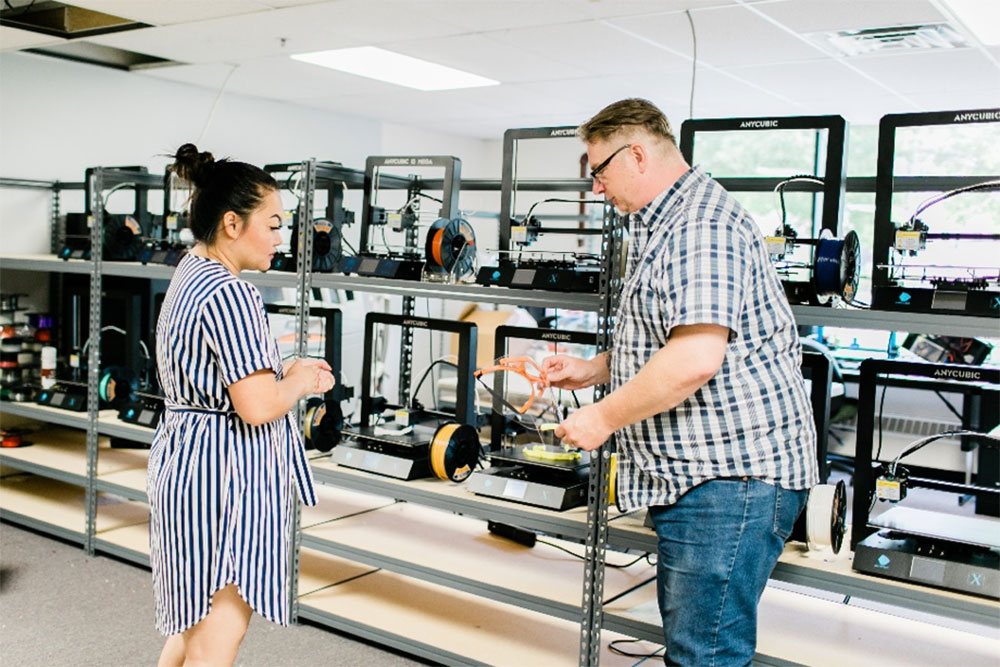
Transformed Lives are Transformed Systems
“Transformed lives are transformed systems.” MBA Director Prof. Lyna Matesi once said this to me in one of our many visioning conversations.
Both CREATE and the MBA program at UWSP are intentionally designing initiatives that lead to transformational impact. I’ve witnessed significant thought leadership and activation of individuals doing tremendous work through these two organizations.
Adding in the layer of network or community is critical here, because we know transformation doesn’t happen alone. In Prof. Elizabeth Martin’s Wisconsin Leadership Seminar, a key takeaway for me was defining SUCCESS as the equivalent of our NETWORK plus WHAT WE CREATE TOGETHER. I’ve learned to be deliberate about building networks and connections – they don’t just happen accidentally.
As a fellow through the MBA program, I’ve connected with a network at CREATE that demonstrates the power of connecting. CREATE has perhaps the strongest network of innovative, creative, impact-seeking thinkers in the region, like Jeremy Solin, owner of Tapped Maple Syrup, who was a critical piece in helping us work through key questions and informing our strategy early on.
I’ve also been fortunate to be a part of a wicked talented group of professionals in my cohort. My colleague Amanda Elsen has enthusiastically joined me at CREATE – jumping right in and volunteering her time and talents. Through Amanda, I’ve had the opportunity to connect with Mary Gronen with Schmid Innovation center in Dubuque, Iowa, doing incredible work in community building.
I’ve also been a part of something deeply important – women supporting women. I’ve enjoyed the network of powerful and inspiring female leaders who make up my MBA cohort – some of whom are already amidst the work of transforming systems – including Lizzie Messerlie, Jessica Andreae, Quyen Hom, Paula Erickson, Meilyn Xiong, Natalie Aneskavich, Emily Swanson, Lauren Van Natta and Maddie Williams to name just a very few. Women can be a powerful force, especially when we’re one another’s active partners, allies and mutual mentors.
CREATE, as an organization, is leading transformational work – some may even call it a movement – in communities and individuals, and the future of the their work is incredibly energizing. Though my fellowship is ending, the work is just beginning. The mindset shift that has occurred while working with CREATE has equipped me to lead organizations, networks and communities forward. It’s empowering to consider our potential when shifting our mindset, viewing limitations as nothing more than constraints set within ourselves and our organizations and fully embracing the power of connection.

Permission to Play, Rapid Prototyping
According to agility expert Pamela Meyer, agile teams are described as “more productive, collaborative, and innovative; and agile organizations more profitable.” Agile leaders challenge the status quo and try unconventional strategies. Agility is about developing competence, capacity and courage in ourselves and our teams. And the potential for impact is only as strong as our teams.
CREATE sees capacity and prioritizes action – helping individuals and teams recognize they are prepared to get started, and that we might miss out if we wait until things are perceived, in our eyes, as perfect. I’ve learned to lean on my expertise and track record in place of what I would call “preparedness.”
I’m not advocating for leading without strategy – in one of Prof. Lyna Matesi’s classes she shared a quote that has stuck with me: Tactics without strategy is the noise before defeat. I agree with this wholeheartedly. I’m advocating for more elasticity around strategy – and integrating what Meyer describes as “permission to play” and “rapid prototyping.” When we give ourselves permission to play, we enable our teams to join us. Our strategies become nimble, working strategies that are responsive to our dynamic environments.
I continue to be so impressed with CREATE’s ability to pivot. The organization has an ability to find meaning and key learnings from all challenges and respond effectively and appropriately. CREATE has cultivated an incredible network of expertise that allows for quick and effective shifts and solutions.
When the impacts of COVID-19 struck mid-fellowship, a few of our prospective clients fell off the map – understandably. We led with a nimble mindset and took the time to truly listen and propose new directions in communities during this pandemic.
As a result, the organization is on the cusp of securing its third contract since the beginning of the year, and continues to be in conversations with communities and regional leaders around how CREATE’s initiatives make tremendous sense as a regional model.

Embrace Tension
My process with CREATE has been a deep dive. A deep dive into the organization, myself, my new teammates and mentors, and how we would work together – oh, and how we would work together, again, amidst Covid-19. It also required a significant amount of reflection: What makes communities better? What leaves people feeling more inspired? What role do each of us play in our collective purpose striving to maximize impact on community?
At times, we’ve seen things differently. Experienced tension. We’ve become frustrated with one another. We’ve experienced conflict – even disagreed about whether or not we experienced conflict.
On the other side of tension lies a depth of understanding, trust and camaraderie required of successful and agile teams. Agile teams continuously strive to lead with creativity and innovation during environments laden with dynamic change and unpredictability.
The magic, I have learned, lies on the other side of conflict, and is best described as CAMARADERIE and COHESION. To cultivate this, I learned to lead with a mindset that consistently seeks understanding and prioritizes communicating effectively – this means being curious, not critical.
I learned to be more patient – doing more listening than speaking. Entering conversations with the standard of 70% listening, 30% speaking was a wonderful technique discussed in Prof. Elizabeth Martin’s Wisconsin Leadership Seminar. Listening is an art that takes practice. I learned to practice asking excellent questions that are open-ended and seek a greater level of understanding – and even help the speaker reach greater clarity.
One of my teammates would share he learned throughout this engagement the importance of togetherness as it relates to taking a next step or moving forward. “Steamrolling” was a descriptor we used for ‘moving forward without the readiness or buy-in of stakeholders’ – and it can leave potentially valuable partners and teammates behind, disengaged, or out of the loop completely – something detrimental to a cohesive team.
During a time when nothing is certain, be certain about the strength of your teams. People doing good work is a tremendous place to invest your talent, time and treasure.
Journey
I’ve posted earlier this week about my purpose in joining CREATE as a fellow: developing revenue-generating strategies to sustain and grow the organization’s impact into the future. Today, I’d like to share the interaction-intensive and nonlinear nature of my journey in hopes of offering helpful takeaways as you embark on your own development strategies.
We started our development process with a lot of group think – more as a trust building opportunity than anything. Given “group think” is not as effective in strategy brainstorming as it is individually, we shifted to individual brainstorms – posing a key question and bringing back a proposed solution or pathway to the team.
From these solutions, we synthesized and prototyped our service as a marketing brochure. We shared our concept brochures with the CREATE Board of Directors and gathered feedback from business and community leaders in and outside of Stevens Point.
We repeated this process over and over.
We leveraged the outstanding work CREATE has done in network building to gather feedback from prospective clients, communities and business leaders – both regionally, from Stevens Point to Antigo, and nationally, including small communities in New York, Iowa, and even Alaska.
These conversations informed our work significantly. After hearing directly from the individuals we would serve, it was easier to begin aligning their needs with the talent, thought-leadership and expertise within the walls of CREATE.
Each time we spoke with a potential client community, we put together a viable proposal that responded to their specific need, emphasizing the importance of a thorough intake process that helped CREATE understand their unique situation, capacity and stakeholders.
Though I started with CREATE with the intent of a clear, phased process (think research, plan, design, launch, evaluate) that ended with a clean launch of a well-defined product, it was most definitely not a linear, 1-2-3 process.
As an agile, effective strategy should, our process has turned into an evolving, working product that is responsive to community and client need, but proactive in anticipating and proposing value.
The best part: each iteration is informed by the last and becomes stronger moving forward as we continue delivering this value-rich, high-impact work across communities.
Disruption
CREATE’s work challenges the status quo – and may even be described as unconventional, or disruptive at times. CREATE leans into discomfort as its best opportunity for growth, while leading positive change and impactful transformation.
The service we were developing was disruptive. Mostly to the consulting industry.
It attempted to keep dollars that are often spent on outside consultants local.
This required articulating the value of an in-community firm versus hiring professional expertise in firms from outside our area.
For starters, as a community-embedded consultant, CREATE has capacity to lead development and community-based projects. CREATE’s strength lies in connecting people and resources while identifying where duplication of effort exists, a common side effect when multiple strategic initiatives occur simultaneously within one community.
Based on the premise of living where they work, CREATE has a depth of understanding of our community history and network with which no external consultant can compete. More importantly, CREATE has longstanding relationships with these organizations and individuals.
Further, CREATE’s model is financially accountable, with the dollars staying local AND within an organization whose mission is to advance OUR COMMUNITY. When you put it on paper, it is almost a no-brainer. Yet, there remained a disconnect.
We identified a need to build a portfolio – to demonstrate the organization’s track record of success. We needed to ensure CREATE was regarded as an expert in the areas in which the organization has worked for the last five years.
It was telling stories like when the community asked CREATE to address entrepreneurship, they implemented the IDEA Center that has successfully launched over 40 start-ups locally.
It meant leveraging local relationships that have already been on the receiving end of CREATE’s expertise in space planning and development initiatives – like the Village of Plover – as an initial client as we built out our portfolio.
It meant sharing successes like the regional viability of the IDEA Center model. CREATE will be a partner in implementing CREATE Adams County, the second co-working space CREATE has launched in our region.
Based on what I’ve seen in 10 short months, I feel passionately that CREATE is going to transform communities – work that has already begun in Stevens Point. And, I am hopeful that the businesses and communities on the receiving end of CREATE’s expertise will contribute to its growth of resource to support expansion of impact.
I am deeply grateful for the opportunity to be a small part of this important work.
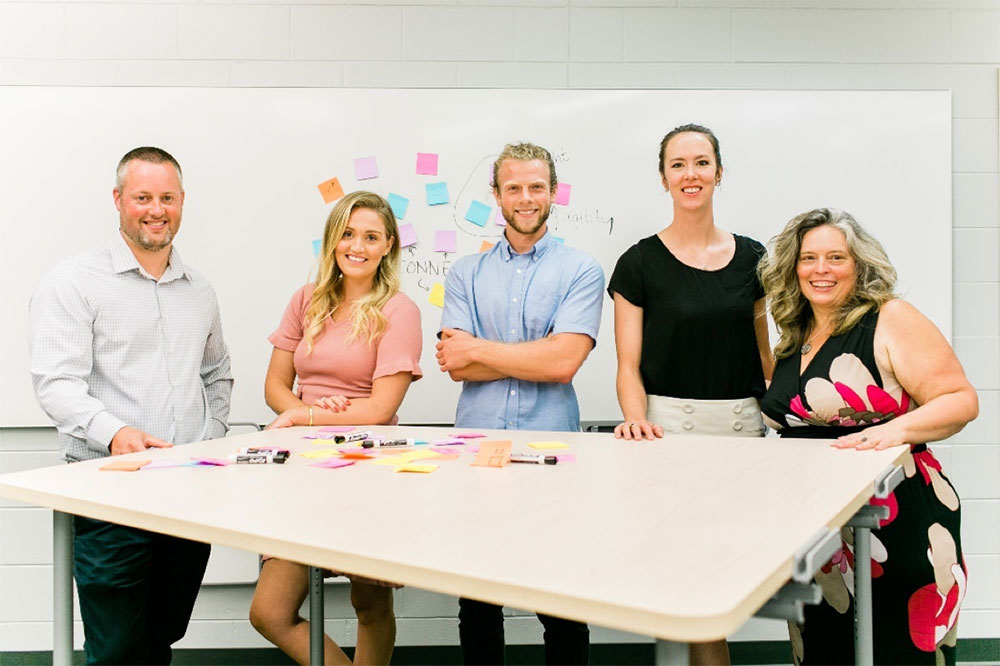
Connection
What better way to end the week with the value that is perhaps most central to my fellowship experience with CREATE Portage County and the MBA program? You guessed it: connection.
We’ve identified the importance of culture as we tell our impact story. Another key pillar of the organization’s values has stood out above the others: connection.
The work CREATE champions is about connecting people to each other – and to places and possibilities.
As CREATE secures more work and increases revenues and funding, its growth and impact – through connection – will simultaneously multiply. As time goes on, you will see and experience more and more impact resulting from CREATE’s work in our community through consulting, development and community-based projects. The success of the organization is bolstered by the incredible people in this community.
After all, we are the sum of our networks and communities and what we create together.
—————————
Thank you for following along over the course of this last week as I shared my journey as a UW-Stevens Point MBA program fellow with CREATE Portage County.
Check out createportagecounty.org and UW-Stevens Point MBA program. There are so many people here to support you, your ideas … or maybe even to address where your restlessness might be pushing you.
To Greg Wright and Lyna Matesi – my deepest gratitude and thanks to you both. I consider myself incredibly fortunate to have you as lifelong friends and mentors.
Photos courtesy of Carly McCray

